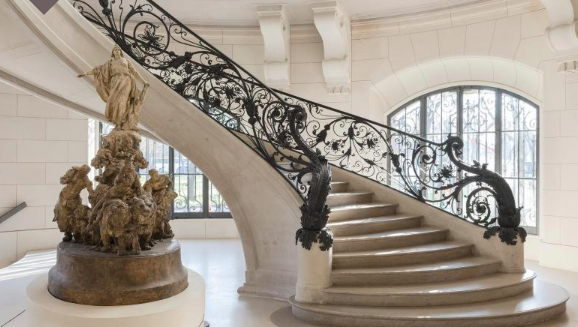
For the first time, the House of Worth is the subject of a major Paris exhibition, showcasing rare pieces from fashion’s earliest luxury brand. Over 400 garments retrace the legacy of a true pioneer of haute couture.
For the first time, the House of Worth—considered the birthplace of haute couture—is featured in a Paris exhibition showcasing rare archival pieces and revisiting the story of one of France’s luxury icons.
Organized in collaboration with Palais Galliera, Paris’ fashion museum, this retrospective at the Petit Palais, titled “Worth, Inventing Haute Couture,” highlights the house founded in 1858 by English designer Charles Frederick Worth (1825–1895), who created garments until the mid-20th century.
Seen by many historians as the “father of haute couture,” Worth revolutionized fashion by placing the designer at the center of the creative process.
Previously, client demands dictated creation. Worth, however, sold his own designs, introduced seasonal collections, and pioneered the concept of fashion shows. He was also the first to sign his garments.
“Worth wasn’t the first, but he was one of the most important figures to overturn that system,” explains Marine Kisiel, curator at Palais Galliera and co-curator of the exhibition.
He developed what Kisiel calls an “economically brilliant” model: selling the same garment three times—through fabric, design ingenuity, and personalized execution—ultimately charging “exorbitant prices” for his genius.
Through more than 400 items—garments, accessories, and artworks—the retrospective explores not only Charles Frederick Worth’s signature style, but also that of his sons Jean-Philippe and Gaston, and later his grandsons Jean-Charles and Jacques, who continued the legacy.
Every era of the house was marked by “opulence, theatricality, and historicism,” says Sophie Grossiord, chief curator at Palais Galliera and co-curator.
Tapestry-like textures, bustled gowns, and elaborate masquerade ball dresses were favored by Empress Eugénie (wife of Napoleon III) and Empress Elisabeth of Austria, better known as Sissi (wife of Emperor Franz Joseph).
From day dresses to opera coats, tea gowns to ballgowns, Worth dressed women from dawn to dusk.
Styles evolved across generations. In the early 20th century, the house embraced Empire-inspired, streamlined silhouettes—clean, straight, and elongated.
Designer Paul Poiret got his start at Worth before founding his own atelier in 1903.
In the 1920s, the house leaned into Art Deco aesthetics and introduced its signature “Worth blue.”
“The aim of the exhibition is to go beyond the figure of Charles Frederick himself and highlight the continuity, heritage, and innovation his descendants brought into the 20th century,” says Grossiord.
“It’s a rare chance to see pieces that may never be shown again,” adds Annick Lemoine, director of the Petit Palais. “They’re so fragile, they’ll be returned to storage after the show.”
The Petit Palais, the City of Paris’ fine arts museum, is located at the foot of the Champs-Élysées. The exhibition runs from May 7 to September 7.
With AFP

Comments